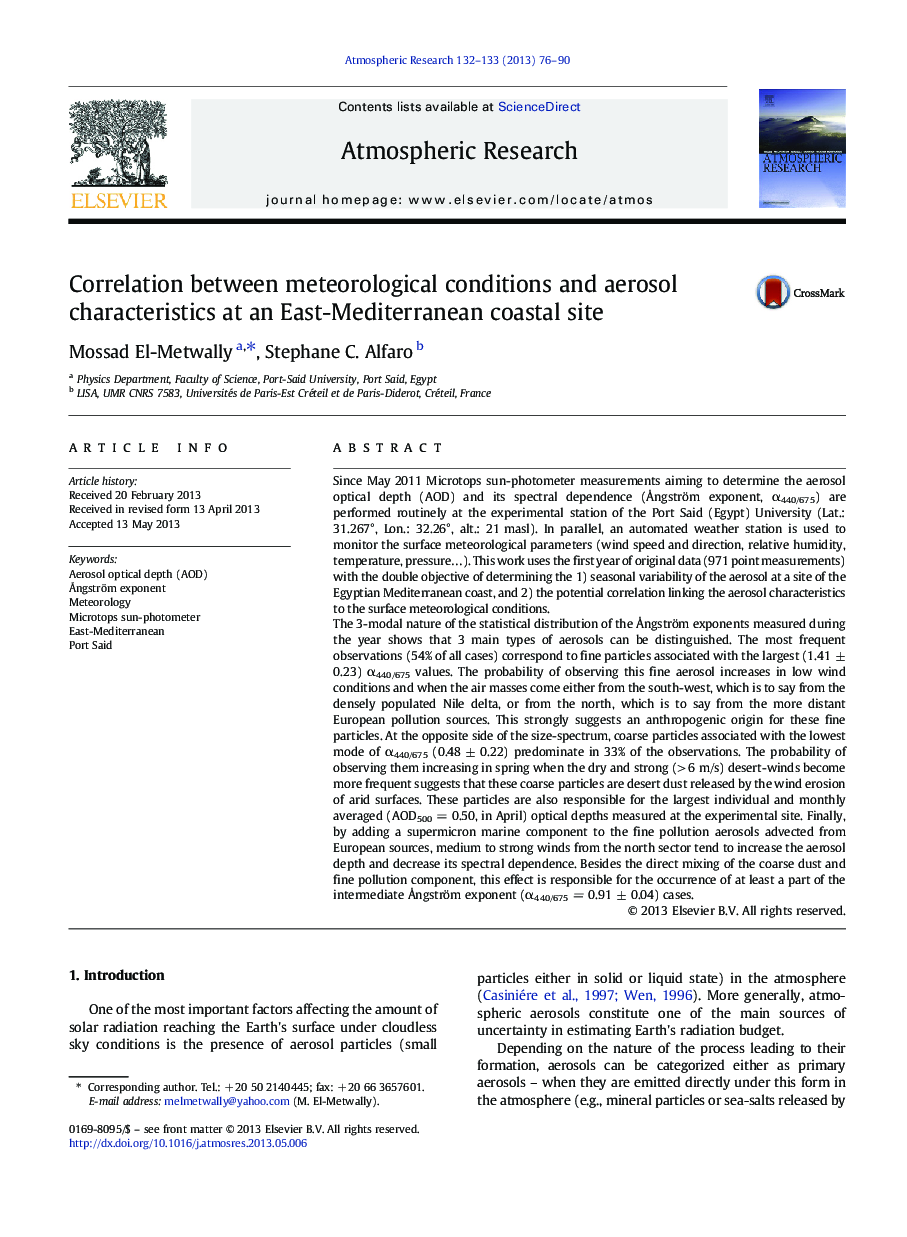| Article ID | Journal | Published Year | Pages | File Type |
|---|---|---|---|---|
| 6343790 | Atmospheric Research | 2013 | 15 Pages |
Abstract
The 3-modal nature of the statistical distribution of the Ã
ngström exponents measured during the year shows that 3 main types of aerosols can be distinguished. The most frequent observations (54% of all cases) correspond to fine particles associated with the largest (1.41 ± 0.23) α440/675 values. The probability of observing this fine aerosol increases in low wind conditions and when the air masses come either from the south-west, which is to say from the densely populated Nile delta, or from the north, which is to say from the more distant European pollution sources. This strongly suggests an anthropogenic origin for these fine particles. At the opposite side of the size-spectrum, coarse particles associated with the lowest mode of α440/675 (0.48 ± 0.22) predominate in 33% of the observations. The probability of observing them increasing in spring when the dry and strong (> 6 m/s) desert-winds become more frequent suggests that these coarse particles are desert dust released by the wind erosion of arid surfaces. These particles are also responsible for the largest individual and monthly averaged (AOD500 = 0.50, in April) optical depths measured at the experimental site. Finally, by adding a supermicron marine component to the fine pollution aerosols advected from European sources, medium to strong winds from the north sector tend to increase the aerosol depth and decrease its spectral dependence. Besides the direct mixing of the coarse dust and fine pollution component, this effect is responsible for the occurrence of at least a part of the intermediate Ã
ngström exponent (α440/675 = 0.91 ± 0.04) cases.
Related Topics
Physical Sciences and Engineering
Earth and Planetary Sciences
Atmospheric Science
Authors
Mossad El-Metwally, Stephane C. Alfaro,
